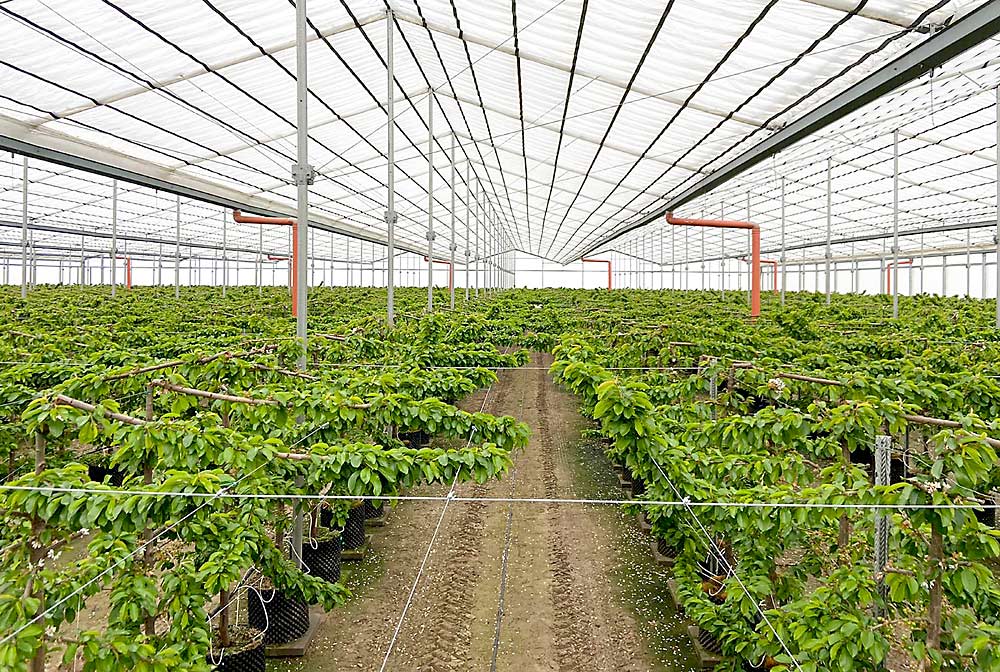
In Michigan, the future of sweet cherries includes protective covers.
Riveridge Produce Marketing, a leading producer of sweet cherries near Grand Rapids, showed attendees of the International Fruit Tree Association’s February conference the rain cover system it plans to install in all new plantings. Investment in protective coverings is becoming more common in other sweet cherry regions, too, as discussed during a conference session.
University of Tasmania professor Dugald Close said cherry growers on Australia’s island of Tasmania have invested heavily in protective covers to protect against late-season rains that induce cracking, as well as hail, wind and frost. Covers also aid pollination by encouraging more consistent bloom times, he said.
Close and other Tasmanian researchers have studied different covering systems in Tasmanian orchards. They found that tunnels, even though they keep rain off, also “create a sauna” around the trees, which is not good for fruit quality. The “Rolls-Royce solution” is a structure with a retractable roof that can better control sunlight, wind and humidity — but that, of course, is the most expensive solution, he said.
The researchers discovered that covered trees use about three times less water than uncovered trees, but they found no connection between water use and fruit quality.
“It’s very easy to overirrigate covered systems,” Close said.
They’re still trying to figure out optimum irrigation scheduling under covers, he said.
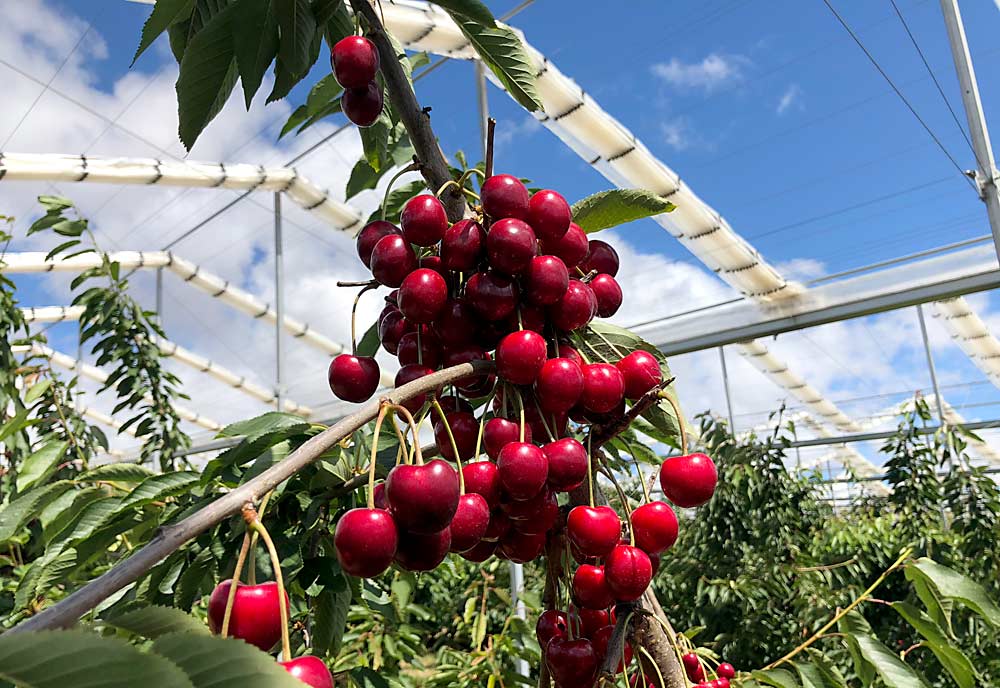
Richard Vollebregt, president of Cravo Equipment Ltd., a Canadian manufacturer of retractable-roof protective structures, said producers tend to focus on air temperature and humidity inside a cover, rather than the temperature of the plant or fruit. Even if air temperature doesn’t change inside a cover, the temperature of the trees can vary widely depending on whether they’re shaded or in direct sunlight. This can have unexpected effects on growth and fruit quality.
“Air temperature doesn’t tell you exactly what the plant’s actually feeling,” he said. “If you have a really sunny climate, your tree is going to be getting really warm in the daytime and transpiration is going to increase dramatically.”
There can also be a big difference between the temperature of a tree’s roots and its growing tips, depending on where the sun is shining. A retractable roof can help increase or decrease transpiration and affect tree and soil temperatures by protecting the orchard or exposing it to the outdoors, Vollebregt said.
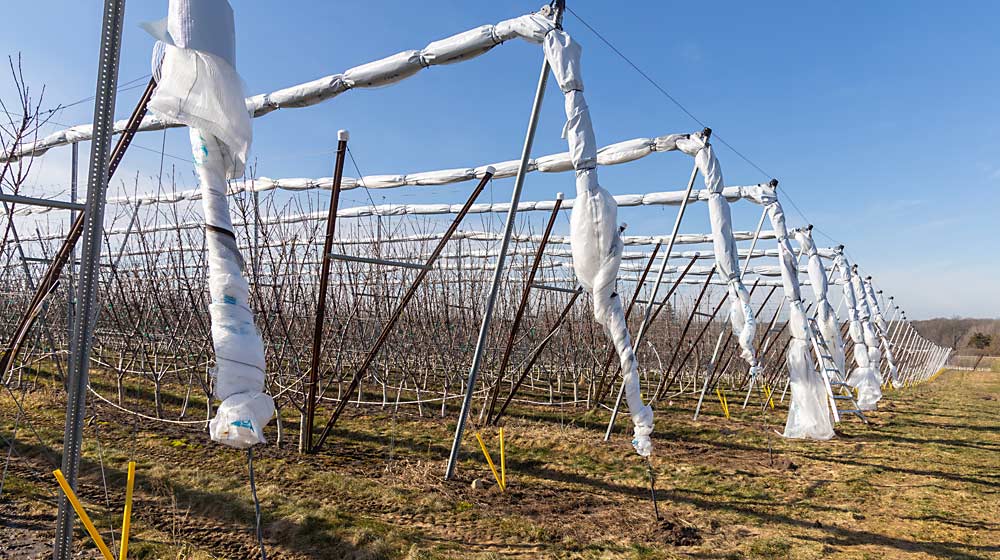
Michigan’s Riveridge Produce Marketing has tried multiple covering systems over more than a decade of growing fresh-market sweet cherries, including high tunnels repurposed from a raspberry planting. Eventually, they settled on a multileader V-trellis planting covered by nets from German company VOEN Covering Systems. The main aim of the nets is to protect the cherries from rain cracking, but mitigating frost and improving pollination also are factors. All of Riveridge’s future sweet cherry plantings will be designed to accommodate protective covers, said operations manager Justin Finkler.
Also in the session, Washington State University tree fruit physiologist Lee Kalcsits stressed the importance of engineering. If your orchard posts and trellises are designed to withstand a specific load, make sure the protective covers and connecting clips can withstand the load, too.
When designing an orchard trellis that will uphold a protective cover — whether the trellis is made of wood, metal, plastic, fiberglass or concrete — you must consider not only strength but geometry, said Mark De Kleine, owner of agricultural engineering company TrellX in Washington.
Even if you’re not driving machines through the rows now, you might in the future. De Kleine urged growers to ensure the rows are wide enough, and the structure tall enough, to accommodate mechanization.
There isn’t much threat from rain in Eastern Washington, where covers mostly protect against sunburn and hail, Kalcsits said. Dust and ash can be a problem in the region, settling on top of covers, increasing shade and leading to slight reductions in color development.
Another potential downside to covers is the labor costs, especially for older systems that take a lot of work to install and uninstall. Covers have the most utility on high-value fruit, Kalcsits said.
—by Matt Milkovich

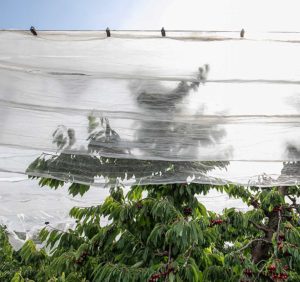
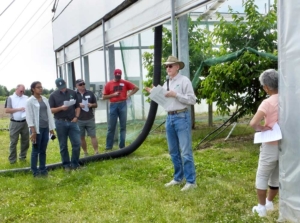





Leave A Comment